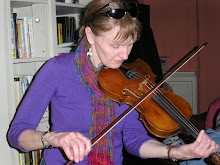New Lanark World Heritage Site is the site of a former mill where cotton was spun. Today, in one of the restored mill buildings, there is a small production of wool yarn being spun on a large spinning mule for the sake of education and for profit.
The community was built below three falls on the River Clyde in the late 1700’s by David Dale.
 The mill ran on power generated by the falls. Today New Lanark still produces hydropower that runs the community, with enough left over to sell back to the power grid.
The mill ran on power generated by the falls. Today New Lanark still produces hydropower that runs the community, with enough left over to sell back to the power grid.  The mill was purchased and run by Robert Owen from 1800-1825. He was a social reformer and forward thinker far ahead of his time. He ideas were not popu
The mill was purchased and run by Robert Owen from 1800-1825. He was a social reformer and forward thinker far ahead of his time. He ideas were not popu lar with other mill owners. But his efforts gave him the title “father of trade unionist movement” in Scotland. He banned children from under age 10 from working in the mill. He started the first nursery school in the UK. Children from ages 2-9 went to school while their parents and siblings worked in the mill. Once children reached age 10, they worked in the mill and then attended classes at night. Mr. Owen treated his own 7 children no differently than he treated the children of the mill workers.
lar with other mill owners. But his efforts gave him the title “father of trade unionist movement” in Scotland. He banned children from under age 10 from working in the mill. He started the first nursery school in the UK. Children from ages 2-9 went to school while their parents and siblings worked in the mill. Once children reached age 10, they worked in the mill and then attended classes at night. Mr. Owen treated his own 7 children no differently than he treated the children of the mill workers.
The school was built by money generated from the company store which was run as a cooperative. New Lanark was the first cooperative that lead to the foundation of The Co-op, a grocery store still thriving around the country today. In school not only were reading, writing, and arithmetic taught, but the children studied dancing, music, and nature studies.


 The workers lived in buildings just across from the mill. A family of 10 may share one room, but they were warm, well fed, and had health care provided by the mill doctor. The work day started at 6 a.m with a breakfast break at 9 a.m. and lunch break in the middle of the afternoon. The work day ended at 7pm. The mill ran 6 days a week and was closed on Sunday. They produced 50,000 miles of cotton per week. The mill operated until 1968 when it could not operate profitably. The mill buildings sat empty and fell into disrepair from the elements and vandalism. A foundation saw the value in restoring the site and started the vast restoration of the mill in the 1970’s. The restoration still continues today. The newest addition is a roof garden on top of one of the mill buildings.
The workers lived in buildings just across from the mill. A family of 10 may share one room, but they were warm, well fed, and had health care provided by the mill doctor. The work day started at 6 a.m with a breakfast break at 9 a.m. and lunch break in the middle of the afternoon. The work day ended at 7pm. The mill ran 6 days a week and was closed on Sunday. They produced 50,000 miles of cotton per week. The mill operated until 1968 when it could not operate profitably. The mill buildings sat empty and fell into disrepair from the elements and vandalism. A foundation saw the value in restoring the site and started the vast restoration of the mill in the 1970’s. The restoration still continues today. The newest addition is a roof garden on top of one of the mill buildings.The site is a glorious example of public and private cooperation to preserve an important part of Scottish history and t
 o educate generations to come. Today 150 people live on the site. Many visitors may only take the Annie McLeod ride. But I encourage you visit the school building, visit Robert Owen's house, spend time looking through the exhibits in Mill buildings 1 and 2 and the housing block, and take the hike to all 3 water falls.
o educate generations to come. Today 150 people live on the site. Many visitors may only take the Annie McLeod ride. But I encourage you visit the school building, visit Robert Owen's house, spend time looking through the exhibits in Mill buildings 1 and 2 and the housing block, and take the hike to all 3 water falls.
No comments:
Post a Comment